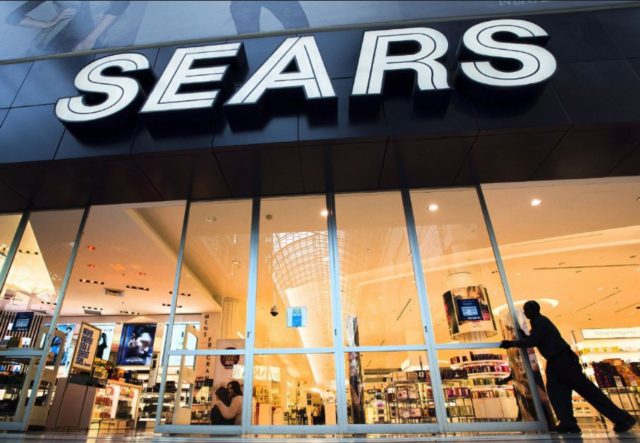Sears Roebuck and Co. ruled America as one of the top retailers, dating back to 1989. It lingered over adversaries from a roost high above Chicago, inside what was at one time the world’s tallest building—one bearing the organization’s name. The tumble from that stature may at last be nearing an end.
Through the span of very nearly three decades, the organization experienced what industry spectators portrayed as a standout amongst the most stupendous falls in business history. Regardless of its union with Kmart—the second-biggest retailer from that period—and an expressed conviction that it can in any case turn things around, Sears is wavering on the edge of fiasco.
The most recent terrible news was uncovered in March, when Sears recognized “significant uncertainty” about its future, sending the stock plunging, and its most exceedingly bad decrease in over two years. S&P Global Market Intelligence proclaimed Sears the U.S. retailer most powerless against defaulting in the following year. A Fitch Ratings investigation of retail insolvencies additionally recorded it as an organization with a high danger of disappointment.
It has been a moderate, difficult fall for these once-overwhelming brands. Singes, specifically, was synonymous with rural American consumerism. It overwhelmed retail and changed the way individuals shopped through its progressive inventory business—the Amazon.com of its time. Kmart fulfilled a great deal too, ascending to a spot directly behind Sears by peppering the country with its Super Center enormous box shops and drawing droves of customers with the guarantee of profound rebates, including obviously the Blue Light Special.
In 1994, Sears and Kmart rounded up a joined $111.4 billion, contrasted and powerhouse discounter Wal-Mart Stores Inc’s. pull of $111.9 billion. Every one of the three retailers positioned in the main 15 in income, among organizations in all businesses, in 1995. From that point forward, they’ve gone in various headings. Burns and Kmart have viewed their client bases shrivel in the midst of a ceaseless string of store terminations. Wal-Mart’s deals became very nearly fourfold throughout the following decade, as the behemoth tripled its areas and set out on mass worldwide extension. Burns and Kmart each walked along, with little change in system.
You have young adults today that definitely don’t look at Sears as a place where they would go shop.
In 2002, Kmart petitioned for insolvency insurance following quite a while of feeble deals and solid rivalry from Wal-Mart. The chain and its 2,100 or so stores were not doing so great, panting under a heap of obligation while not able to get enough customers through the entryways. At a certain point, Kmart’s greatest nourishment wholesaler ceased shipments after the retailer was not able make installments. Kmart would rise up out of chapter 11 under the control of fence investments extremely rich person Eddie S. Lampert and his firm, ESL Investments.
At that point came the merger, which at the time was the greatest tie-up in the archives of retail. From that point forward, Sears and Kmart have been gradually destroyed by Lampert. Actualizing a culture of warring tribes, one in which divisions would fight it out for assets, little money was piped once again into restoring physical stores. Pieces of the business were sold to keep the lights on. In January, the organization sold the popular instrument mark Craftsman to Stanley Black and Decker Inc. for about $900 million.
When, Sears was the disruptor—not the upset. At the point when the Sears list initially showed up on doorsteps in the 1890s, it generally changed how Americans shopped. In those days, a great part of the populace lived in country regions, and they purchased practically everything from little shops at rustic intersections. These general stores had restricted determination and charged excessive costs. They were the main diversion around the local area.
Overall, Sears statistical revenue has fallen a significant amount and this can be confirmed by Investopedia.
At the point when Kmart’s securing of Sears was declared in 2004, Lampert remarked, “I don’t think any retailer ought to seek to have its land be worth more than its working business.” As Sears’ prospects blur, in any case, financial specialists are progressively looking at its land. Singes spun off around 200 properties into a land venture put stock in (REIT) that started exchanging as Seritage Growth Properties (SRG Seritage Growth Properties SRG 40.22-0.89%) in July 2015. Past spinoffs incorporate Lands’ End and Sears Canada. Stanley Black and Decker Inc. (SWK Stanley Black and Decker Inc SWK 138.49-0.09%) consented to purchase Craftsman in January.
Burns has cut the hours, pay and headcount of retail staff to spare money, bringing about stores and client experience to decay. “We have a 17-year-old running the workplace and money office,” one worker kept in touch with Business Insider in August 2016. “He has no involvement in either, however he is a warm body to fill the employment. The end is coming soon, get out while you can.”










